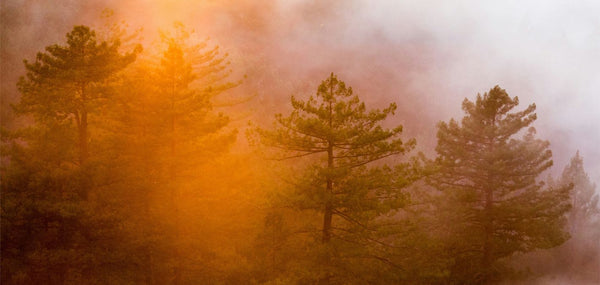
Get news, updates, & event Info delivered right to your inbox:
If news headlines have you feeling like forest fires are getting worse, unfortunately, research backs it up. In 2023, data from World Resources Institute’s Global Forest Watch confirmed that forest fires are burning nearly two times more tree cover than they did 20 years ago. Another study from the University of Maryland showed that forest fires have caused over one quarter of all tree cover loss in the last 20 years.
So what is causing this significant increase? While there are several contributing factors, climate change is one of the biggest drivers. It is a threat multiplier that intensifies extreme weather events and environmental conditions such as drought, hotter temperatures, and pest and disease outbreaks. These contribute to longer and more severe fire seasons by facilitating drier and warmer conditions and increasing fuel loads (the total amount of combustible material in a defined area).
Severe wildfires induce a cascade of negative effects that further compromise the integrity of ecosystems — including widespread tree mortality, profound habitat loss, soil erosion and hydrophobicity. They also release a lot of emissions into the atmosphere, which only accelerates climate change. This negative “fire-climate” feedback loop, combined with increased human development in forests and naturally fire-prone ecosystems, increases the frequency and likelihood of future fires.
Modern forests are particularly susceptible to severe fire due to a combination of climate change and historic landscape management. These have manifested ideal conditions for wildfires, including dense forests with high fuel loads, rising temperatures, increased drought, longer fire seasons, below-average winter precipitation, and earlier spring snowmelt (which increases the length of fire seasons and reduces soil at the ground level). Further exacerbating the issue are changing climate conditions, such as precipitation and temperature, that further contribute to drier landscapes.

So What Can We Do About It?
The obvious answer is to take swift and decisive global climate action — including drastically reducing our greenhouse gas emissions, and disrupting the growing fire-climate feedback loop. This is still possible, but requires timely, large-scale and systemic transformation.
We also need to end the large-scale degradation and deforestation of our remaining forests. According to the World Economic Forum, if deforestation was a country, it would rank third in CO2 emissions, after China and the U.S. In addition to increasing the likelihood of severe fires on a local level, deforestation exacerbates climate change.
Individual actions can also make a difference — such as carefully managing personal fires and creating a defensible space around your home. Another powerful individual action you can take is donating to our Forest Fire Fund.
The fund supports global forest fire recovery projects that are planting trees as part of active management strategies to reduce the susceptibility of forests to future wildfires, insect infestations, and disease outbreaks. They consider everything from the tree species chosen to the distance between trees and the exact location where trees are planted. This is to prevent invasive species from colonizing burn scars, while restoring multi-layered wildlife habitat, and increasing resilience against future fires.
